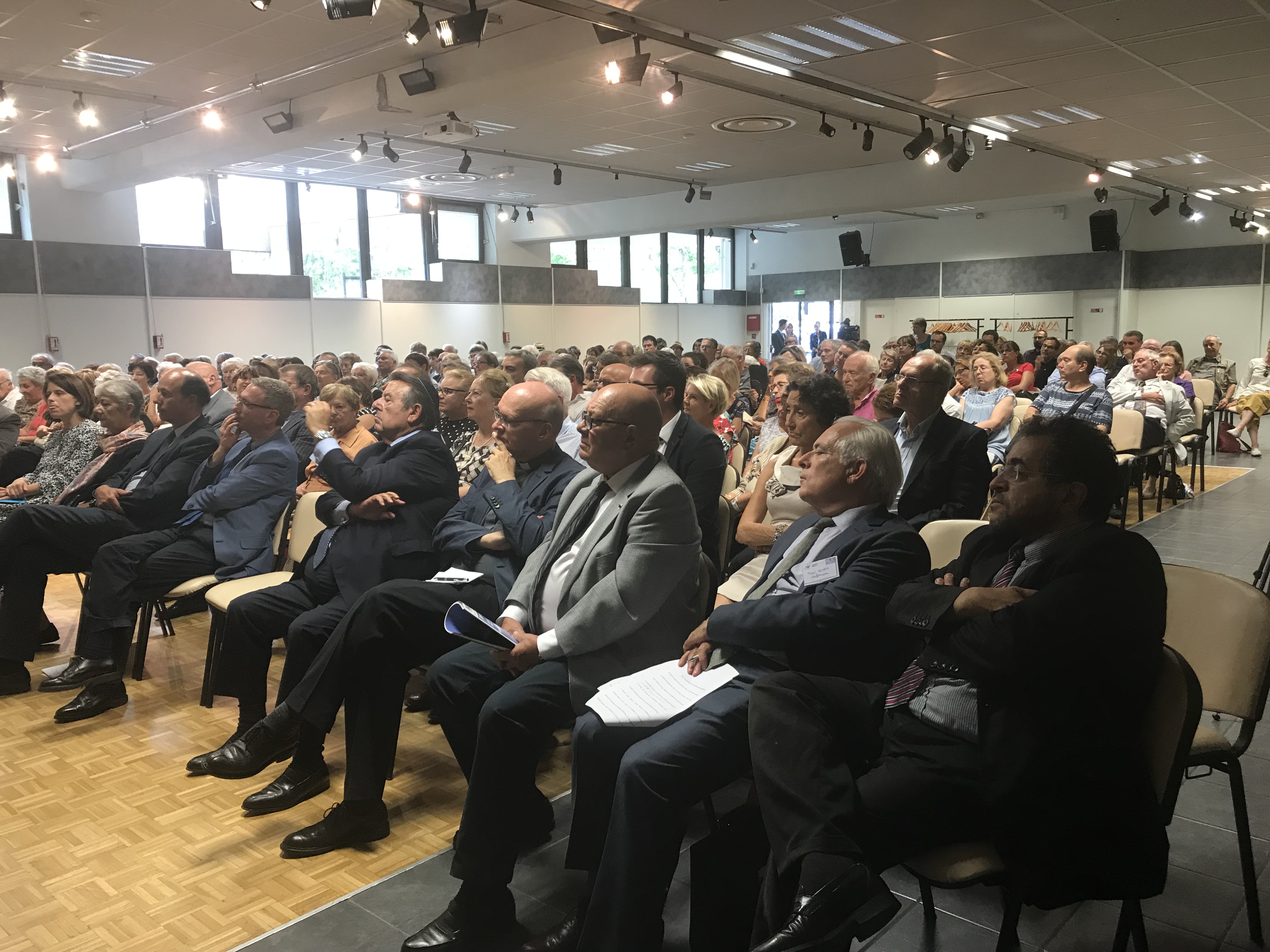The ‘Journées Européennes de la Culture et du Patrimoine Juifs en France’ – JECPJ (European Days of Jewish Culture and Heritage in France) is an association set up to manage the European Days of Jewish Culture in France.

On 8-15th September 2019, the 20th celebration of the European Days of Jewish Culture and Heritage was held in the cities of Clermont-Ferrand and Chamalières. For years, this event presided over by Thierry Koch, president of the JECPJ-France, has been a high point in the discovery and promotion of tangible and intangible Jewish heritage.
Under the theme “Transmit and Innovate“, the conference was organised with the participation of Haim KORSIA, the Chief Rabbi of France, and visits were made to the former BEIT YACOV synagogue, which now houses the Jules Isaac Cultural Centre. Many personalities were also present during this visit, such as Philippe Allouche, director-general of the Foundation for the Memory of the Shoah, Alain Sebban, representative of the Regional Consistory (Lyon), and François Kalist, Archbishop of Clermont, Anne-Gaëlle Baudouin-Clerc, Prefect of Puy-de-Dôme, Olivier BIANCHI, mayor of Clermont-Ferrand, Louis Giscard d’Estaing, mayor of Chamalières, Alain Leray, president SNCF USA, François Moyse, president AEPJ, European Association for the Safeguarding of Jewish Heritage.
As part of the opening of the European Days of Jewish Culture and Heritage, Julien Bouchet, associate professor and Doctor of History, as well as Dr. Michel Wurm recalled the age of the Jewish presence in Auvergne. Jewish communities have existed in the Auvergne since at least the 5th century when Auvergne Jews were involved in wine growing and agriculture. The successive persecutions of this period caused the exodus of most of the Jewish population to other parts of Europe (Franche-Comté, Spain, and Italy in particular). The last expulsion of Jews during this period took place during the reign of Charles VI (1380 – 1422). This expulsion was highly symbolic because the Jewish presence was already very small in the region.

It was only at the end of the modern period that the Jewish community of Clermont was officially recognised. In 1862, the synagogue in the Rue des Quatre-Passeports was inaugurated by the Chief Rabbi of Bordeaux, David Marx. This synagogue makes Clermont-Ferrand one of the few French cities, along with Paris, Lyon, Marseille and Bordeaux, to have a synagogue.
In 1939, faced with the invasion of Alsace and Moselle by the German army, Clermont-Ferrand and its surroundings welcomed an influx of refugees, including several thousand Jews who settled in Auvergne. The Jewish seminary was temporarily installed in Clermont-Ferrand and Chamalières, and the synagogue remained in operation until 1943. It is estimated that 400 Jews were deported from the Puy de Dôme.
Today, the synagogue on Rue des Quatre-Passeports has become the Jules Isaac Cultural Centre. It is dedicated to the history of the Jewish presence in Auvergne and to the memory of the “righteous”. The presence of Jews in the region can also be found in art and architecture, most notably the representation of a Jew on one of the stained-glass windows of Notre-Dame-de-l’Assomption Cathedral. Represented wearing the yellow hat, it is a distinctive sign of the Jewish population from the 11th century onwards.
By reviewing and interacting with the history of Jewish movement and places of Jewish heritage there is an emphasis on the motion of history. The conference successfully brought together hundreds of participants and proved to be an essential day of reflection and understanding of the legacy of European Jewish heritage.
Source: Sabino Moustacchis





Follow us: